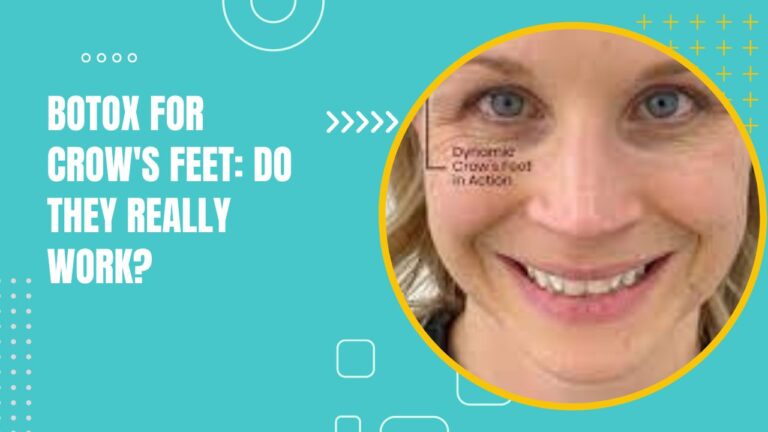In today’s evolving societal norms, the way Botox affect our perception of body image is becoming increasingly evident. Aesthetic enhancements, particularly Botox, have seen a surge in popularity. The visual transformations post-Botox treatment—like smoother skin and fewer wrinkles—are clear. Yet, beneath the surface lies a more profound influence on how we view ourselves, not just in the mirror but in the broader context of our lives. The decision to undergo Botox isn’t merely about aesthetics; it’s intertwined with self-esteem, confidence, and our place within societal expectations. Often, we overlook the deep-seated emotional and psychological implications of such choices.
How Does Botox Affect Our Perception of Body Image?
Botox, a popular cosmetic treatment, has significantly influenced contemporary perceptions of body image. Its widespread use reflects societal trends towards valuing youth and physical perfection, often impacting individuals’ self-esteem and body image. Botox modifies facial expressions and reshapes public attitudes towards ageing and beauty standards.
- Widespread Acceptance: Botox normalises cosmetic enhancements.
- Youthful Appearance: It promotes an ageless aesthetic ideal.
- Influencing Self-Perception: Botox impacts individual body image.
- Cultural Shifts: Reflects changing beauty standards.
- Psychological Effects: Alters self-esteem and confidence.
- Facial Expression Changes: Botox affects non-verbal communication.
- Societal Pressure: Intensifies the pursuit of physical perfection.
Botox Use in The Celebrity Culture
The celebrity role has an indelible impact on public perceptions of beauty and the increasing normalisation of Botox procedures. Celebrities who openly share their experiences with Botox treatments or endorse these procedures influence societal norms and expectations around ageing and beauty. With more and more celebrities turning to Botox publicly, the procedure gains credibility and even becomes aspirational.
| Factor | Positive Influence | Negative Influence |
| Celebrity Endorsements | Adds credibility to Botox | May set unrealistic beauty standards |
| Role Models and Peer Pressure | Popularises Botox as a beauty routine | Creates pressure to undergo treatments |
| Impact on Younger Audiences | Introduces them to options | May distort natural ageing perception |
| Media Amplification | Raises awareness | Sensationalises the procedure |
| Trendsetting and Beauty | Advances new beauty ideals | Could narrow societal beauty norms |
| Societal Acceptance | Normalises the use of Botox | May erase individuality and uniqueness |
The “Flawless” Standard: Pursuing perfection with Botox
The popularisation of Botox treatments has intensified the societal quest for an ideal of flawlessness in physical appearance. This drive towards perfection can lead to unrealistic beauty expectations, prioritising a youthful, wrinkle-free look over natural ageing. Particularly concerning is this trend, as it may diminish individual uniqueness and advance a narrow notion of beauty.
Book A Consultation With Dr Tarek Bayazid
Top-rated Plastic Surgeon For Botox in Dubai
Installment Plan Available
| Factor | Impact on Society | Impact on Individual |
| Unrealistic Standards | Creates collective norms | Drives personal anxiety |
| Pressure to Conform | Enhances social cohesion | May induce emotional stress |
| Natural Aging as Taboo | Prioritises youthfulness | Stigmatises natural ageing |
| Emotional Toll | Collective mental health | Individual mental health |
| Loss of Individuality | Homogenises beauty | Erases personal uniqueness |
| Health Risks | Public health concerns | Personal health risks |
Cosmetic Botox: Generational Perspectives
Different generations perceive Botox differently when it comes to shaping beauty standards. Older generations might view these treatments sceptically, associating them with artificiality or vanity, while younger people may see Botox as a standard and acceptable part of contemporary beauty routines. A snapshot of the changing beauty norms and cultural values can be found in this generational divide.
| Perspective | Older Generation | Younger Generation |
| Historical Context | Less exposure to Botox | Grew up with Botox as a norm |
| Accessibility and Information | Limited information | Easily accessible info |
| Age-Related Stigma | More resistant to Botox | More open to Botox |
| Vanity vs Self-Care | It may be viewed as vanity | M/.mn |
| Economic Considerations | Different financial priorities | May allocate funds for Botox |
| Cultural Shifts | Traditional beauty norms | Evolving norms |
Gender and Botox: Who Is It Really For?
While Botox treatments are primarily associated with women, more men are also undergoing these procedures. Considering this trend, we can ask whether societal expectations surrounding appearance differ significantly based on gender and how beauty standards are applied.
Moreover, the rise in Botox use among men highlights the broader cultural shifts in notions of masculinity and beauty.
| Factor | Impact on Women | Impact on Men |
| Traditional Norms | Higher societal pressure | Less societal pressure |
| Masculinity and Beauty | Less applicable | Redefining masculinity |
| Marketing Strategies | Mainly targeted | Increasingly targeted |
| Social Expectations | Face more scrutiny | Face different types of scrutiny |
| Medical Reasons | Mainly cosmetic | Cosmetic and medical reasons |
| Cultural Trends | Consistently subjected | Newly emerging trends |
The Psychological Effects of Botox on Body Image
Exploring how Botox affects our perception of body image is crucial, given its growing popularity. Botox can have various psychological effects on individuals, depending on their motivations for undergoing the procedure and subsequent experiences. A positive psychological impact, such as reinforcement of body dysmorphic disorders, has been reported by many people. The complex relationship
between Botox and psychological well-being merits more profound investigation.
- Self-Esteem Boost: Many individuals report increased confidence and self-esteem after undergoing Botox treatments.
- Body Dysmorphic Disorder: There is concern that Botox can exacerbate or contribute to body dysmorphic disorders.
- Dependence on Cosmetic Procedures: Psychological reliance on Botox for self-esteem can lead to a cycle of dependency.
- Perception vs. Reality: The perception of improved appearance after Botox may not always align with objective changes, affecting psychological well-being.
- Emotional Well-being: The psychological impact of Botox can extend to general emotional well-being and quality of life.
- Validation and Social Approval: The desire for social validation can be both a motivator and an effect of undergoing Botox.
- Long-Term Psychological Effects: A positive psychological impact, such as reinforcement of body dysmorphic disorders, has been reported by many people.
Botox and the Age Factor: Combatting or Perpetuating Ageism?
The role of Botox in fighting the signs of ageing inevitably leads to discussions about how Botox affects our perception of body image in relation to age. While some see Botox as a tool to combat ageism by helping individuals look younger and potentially reducing age-related discrimination, critics argue its widespread use perpetuates negative attitudes toward ageing.
| Factor | Combatting Ageism | Perpetuating Ageism |
| Combatting Discrimination | Reduces visible ageing signs | Reinforces ageist norms |
| Youth-Oriented Culture | It provides a way to fit in | It makes fitting in necessary |
| Elderly and Botox | Empowers through choice | Reinforces stereotypes |
| Health Implications | Potential for safe use | Risk factors for older adults |
| Psychological Impact | Possible boost in self-esteem | Possible decrease in self-esteem |
| Economic Exploitation | Adds to market demand | Targets vulnerabilities |
Ethical Concerns: Medical Risks and the Commodification of Beauty
The increasing use of Botox brings ethical questions to the forefront, including considerations about the medical risks and the moral implications of commodifying appearance. There is also the ethical complexity of the potential side effects, especially when the procedure is performed irresponsibly. Moreover, the very notion of turning beauty into a purchasable commodity raises moral and ethical debates.
| Factor | Ethical Concerns | Ethical Safeguards |
| Medical Risks | Potential for harm | Need for informed consent |
| Commodification | Reduces beauty to a commodity | Calls for ethical advertising |
| Informed Consent | May lack practice | Necessary for ethical practice |
| Economic Exploitation | Targets insecurities | Requires responsible marketing |
| Social Inequality | Access dependent on wealth | Calls for equal access |
| Regulatory Oversight | May lack strict rules | Necessary for consumer safety |
A multifaceted effect of Botox on body image can be seen both psychologically and physically. With Botox treatments becoming more popular, it is important to understand what these treatments mean in the long run. Knowing how Botox affect our perception of body image, we can make better choices about our bodies and health.
Renowned as one of Dubai’s leading plastic surgeons, Dr Tarek Bayazid specialises in facial rejuvenation and body contouring procedures. With an MD from Belgrade University, Dr Tarek has extensive training under Europe’s eminent plastic surgeons. His affiliations include memberships in globally respected organisations such as ISAPS and the Serbian Medical Chamber.
So why wait? Book a Consultation with Dr Tarek today and have the answers to all your Questions Before Getting Injected.




